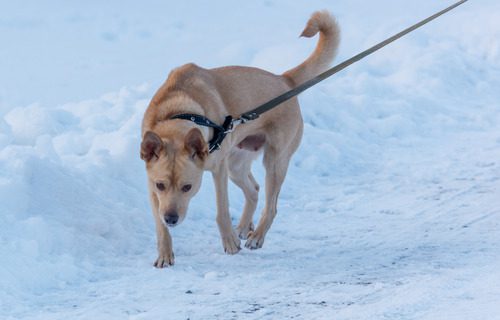When temperatures drop in Marietta, GA, it’s not just humans who start to feel the chill—dogs do, too. But how cold is too cold for a dog? That question isn’t as straightforward as it might seem. Different breeds, sizes, coat types, and health conditions all factor into a dog’s tolerance for cold weather. While some dogs relish brisk winter walks, others may need extra care and protection the moment the thermometer dips. If you’ve ever hesitated before stepping outside with your pup on a frosty morning, you’re not alone—and you’re asking the right question. Let’s explore what dog owners in Marietta need to know to protect their pets when cold weather arrives.

How Cold Is Too Cold for a Dog: Factors That Make a Difference
There isn’t a one-size-fits-all temperature threshold for every dog. Some dogs handle winter better than others. Understanding what affects your pet’s comfort and safety can help you make better decisions about their time outdoors during the colder months.
Breed and Coat Type Matter
Dogs with thick, double-layered coats—like Huskies, Malamutes, and Saint Bernards—were bred for colder climates. These dogs often handle lower temperatures well and may even enjoy snow-covered yards. On the other hand, breeds with thin coats, such as Greyhounds, Chihuahuas, and Dobermans, feel the cold much faster and may require coats or sweaters when they go outside. Short-haired breeds don’t have the natural insulation that some larger, cold-weather breeds do. Their skin is more exposed, and body heat escapes quickly. This means that for dogs with thin coats, temperatures below 45°F can start to feel uncomfortably cold.
Size and Body Weight
Smaller dogs lose heat faster than larger dogs. Their bodies don’t retain warmth as efficiently, which means a small Yorkie will feel the cold much sooner than a Labrador. Body fat also plays a role in heat retention. Lean dogs are more likely to get chilled quickly, especially if they have minimal fur. Puppies and senior dogs, regardless of breed or size, have a harder time regulating their body temperature. This means they’re more susceptible to hypothermia and frostbite if exposed to cold air for too long.
When Is It Too Cold for a Dog to Go Outside?
Pet owners often ask, “How cold is too cold for a dog to go for a walk?” While individual tolerance varies, there are general guidelines that help determine when cold becomes dangerous for your pet. While every dog is different, here’s a general breakdown of outdoor temperatures and their effect on dogs:
- Above 50°F – Safe for most dogs. You can walk and play outside without concern.
- 45°F to 32°F – Caution zone for smaller dogs or those with short coats. Keep outings shorter and consider a jacket.
- 32°F to 20°F – Risk of cold-related discomfort and hypothermia increases, especially for small, senior, or thin-coated dogs.
- Below 20°F – Potentially dangerous for most dogs. Limit outdoor time to bathroom breaks.
Wind chill, dampness, and whether the dog is active or still also play roles. A quick bathroom break in 25°F weather might be fine, but a long, still walk in damp snow could increase the risk of hypothermia.
Signs Your Dog Is Too Cold
Your dog can’t tell you when they’re cold, but they can show you. Watch for signs like:
- Shivering or shaking
- Lifting paws off the ground
- Slowing down or refusing to walk
- Seeking shelter or trying to go back inside
- Whining or barking
If you notice any of these signs, bring your dog indoors right away and contact Mills Animal Hospital if you’re concerned.
Protecting Your Dog During Cold Weather in Marietta
Even though Marietta doesn’t experience harsh winters like other parts of the country, dogs still need protection from colder temperatures.
How to Dress Your Dog for the Weather
If your dog has a short coat, consider a properly fitted sweater or dog jacket. Look for one that covers the neck, chest, and belly without restricting movement. Foot protection is another consideration. Dog boots can help shield paws from icy sidewalks, salt, and other cold-weather irritants. Be sure to remove wet clothing or boots immediately after walks to prevent chills and keep your pet dry and warm indoors.
Limit Time Outside
Try to keep walks shorter when temperatures drop, especially when it’s windy or damp. Encourage bathroom breaks in a secure, sheltered area. When possible, exercise your dog indoors using toys, treat puzzles, or hallway fetch games to burn energy without exposure to the cold. If you’re ever unsure how long is safe, ask your veterinarian. For tailored winter care advice, please call Mills Animal Hospital at (770) 988-6698.
Cold Weather Risks You Should Know
Even brief exposure to cold weather can lead to health concerns, especially for dogs not built for low temperatures.
Hypothermia in Dogs
Hypothermia happens when your dog’s body temperature drops below normal due to prolonged exposure to cold. It can range from mild to severe and may become life-threatening if left untreated. Common signs include:
- Shivering that stops as the condition worsens
- Lethargy or confusion
- Cold ears and body
- Dilated pupils or slowed breathing
Mild hypothermia can sometimes go unnoticed. If your dog has been outside in the cold and seems “off,” call your vet immediately.
Frostbite Risk
Frostbite affects areas with the least protection—paws, ears, and tails. It can occur when temperatures fall below freezing, especially if it’s windy or wet. Tissue damage may not be obvious right away, but discoloration, pain, or swelling can appear hours later. Avoid walking on icy, wet surfaces when temperatures are near or below freezing. Wipe your dog’s paws when you come inside, and inspect them for signs of irritation or injury.
Indoor Comfort and Care
Protecting your dog from the cold doesn’t stop when they come inside. There are several ways to help them stay comfortable through chilly days.
Create a Warm Resting Space
Offer a cozy dog bed with soft blankets in a draft-free area. Elevating the bed slightly off the ground can also help reduce cold transfer from floors. For older dogs with joint pain, orthopedic beds can provide added relief and warmth.
Adjust Feeding if Needed
Increased physical activity outdoors during colder weather might mean your dog needs a little more fuel, especially for active or working breeds. On the other hand, if your dog is less active in winter, be mindful of portions to avoid unwanted weight gain. Always discuss dietary changes with your veterinarian before making adjustments.
Is It Time to Call Mills Animal Hospital?
Even with all precautions in place, there may be times when your dog reacts poorly to the cold or seems uncomfortable after spending time outdoors. If your pet appears disoriented, lethargic, or overly chilled, contact Mills Animal Hospital for guidance. We’re here to help you make safe choices for your pet year-round. Please call us at (770) 988-6698 to speak with a member of our team. We’re always happy to answer your questions about how cold is too cold for a dog and what steps you can take to protect your pet.
